Wolseley helmets made of sola pith are indeed rare things. One was described on this website and Chis Mills has shown one in his book*. My reason for presenting a third one now is that it offers some more and different detail, which might give some clues to the circumstances and time of its manufacturing and indeed, proof of its use as a military helmet.
The shape and proportions of this example, including a flared out brim, are indeed near to those of a regular cork Wolseley. The slightly crashed top and the completely faded green fabric under the brim (note the different shades of green on the close up picture) are not the only signs of a very active life – the former owner – D. Bridgden – has as well penciled details of his (or her?) military career on the inside.
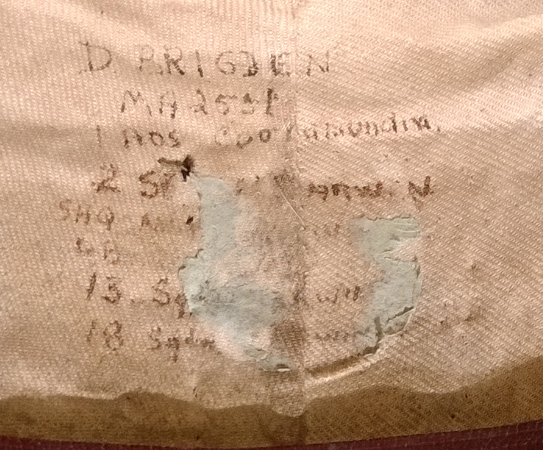 Closer examination of the handwritten details on the inside of the helmet provides the following information.
Closer examination of the handwritten details on the inside of the helmet provides the following information.
- From 1940 to 1946, Cootamundra, NSW, Australia hosted an RAAF Base which housed the No. 1 Air Observers School, No. 2 Recruit Depot and Squadrons 60 and 73. An air observer is a military aircrew member whose duties are predominantly reconnaissance.
- The second line is unclear except that Darwin, NT, Australia is mentioned
- SHQ presumably stands for Squadron Headquarters
- 13 Squadron RAAF took on a general reconnaissance role which included shipping patrols, searches for missing aircraft and general security patrols across the top end of Australia.
- Dutch airmen who escaped to Australia after the Japanese invasion of the Netherlands East Indies (NEI) were brought together to form Dutch squadrons under RAAF command. First among these special squadrons was 18 (NEI) Squadron, formed at Canberra on 4 April 1942. Although nominally made up of Dutch nationals, the RAAF supplied many co-pilots, air gunners, bombardiers, photographers, and ground staff.
It is unclear why the helmet turned up in the United States – maybe another hint? At least, one thing is obvious: This helmet was used by military personal and not proposed for a child, as might have been an option with the other sola pith Wolseley shown.
Not only the color, being more olive drab than khaki, but foremost the kind of material used let immediately think of a comparison to the more familiar Khaki Sola Pith Hat, especially the metal fittings for the top ventilation.
That applies for the very flat shaped cloth covered piece on top as well, as for the typical, small metal ventilation tube – really a tube, not a grid as usually fitted into cork helmets, to match the thickness of the pith structure. See two other examples on the interior close up pictures of KSPHs. Neither the cloth top on the KSPH, nor on the pith Wolseley is screwed in – for the tube is not threaded – but fixed with some stitches of yarn on the outer fabric cover.
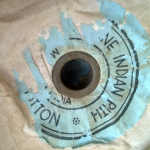 Finally, we have a paper label, unfortunately partly removed, but still giving some information: (Genui?)ne Indian Pith. (Genuine?) C(otton?). M(ade in Ind?)ia.
Finally, we have a paper label, unfortunately partly removed, but still giving some information: (Genui?)ne Indian Pith. (Genuine?) C(otton?). M(ade in Ind?)ia.
There is no date – as usually is not in helmets, which were not issued but purchased privately and on the civilian market. But the familiar parts used allow us to date this pith helmet, in my opinion, not far from the usual wartime KSPHs, that is 1939 to 1942.
Roland Gruschka
September 2015
*C.P. Mills: “Jaunty Hat”, Volume 1, London 2013; page 390f

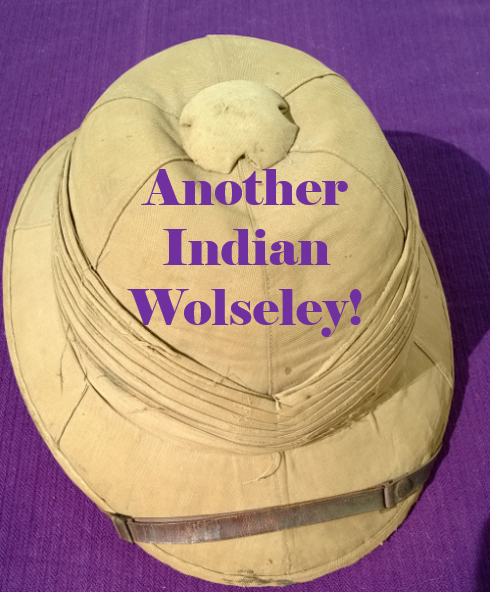
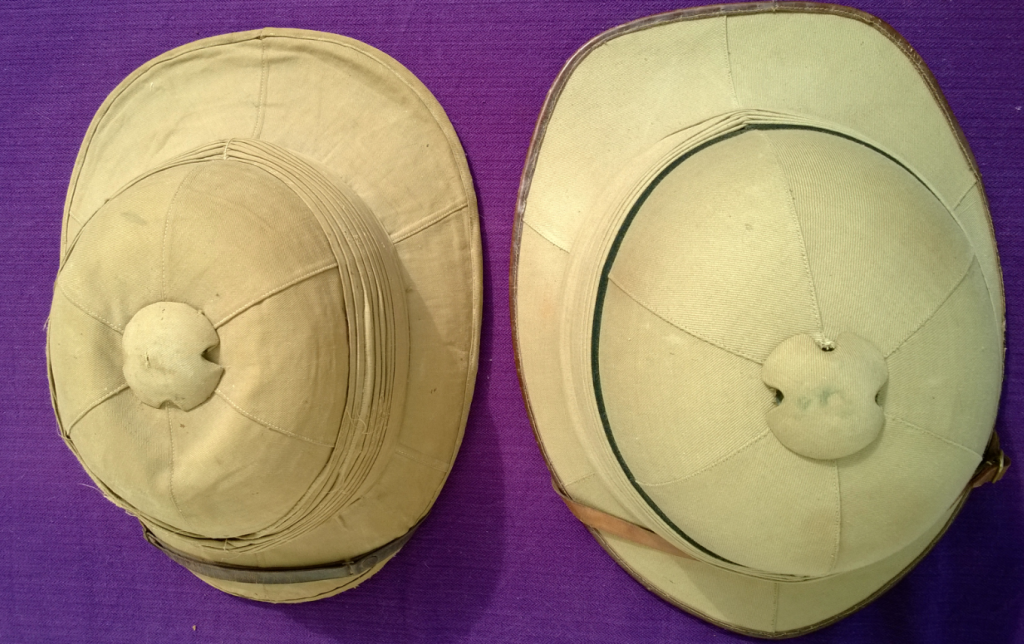
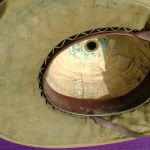
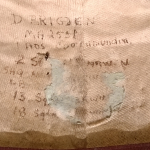
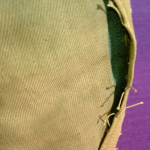
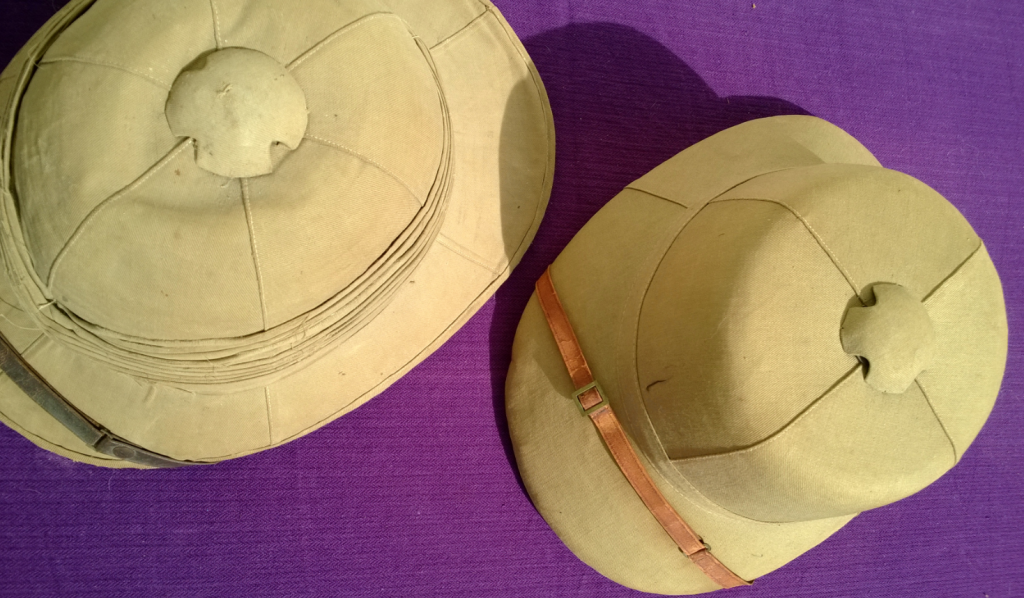
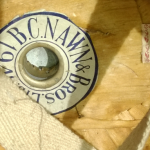
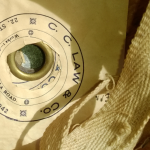
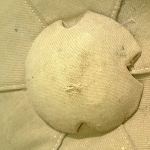
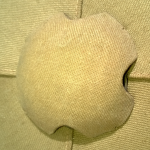
I have noticed you don’t monetize your site, don’t waste
your traffic, you can earn additional bucks every month because you’ve got high quality content.
If you want to know how to make extra money, search for: Mrdalekjd methods for $$$
I too have the very same helmet, withh an intact label.
Interestingly mine is also named and for the r.a.a.f as well.
Maybe they knew each other.
I purchased it on ebay from Australia.